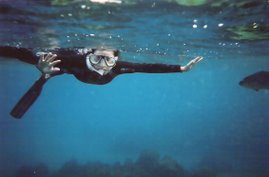
I realize that when Tanzanians see my face with the bandages and black eye, they are probably thinking about two possibilities: I was beaten by my husband (in their minds, most likely) or I was beaten and robbed on the street (less likely, especially as a foreigner – since foreigners are less likely to be beaten before being robbed). I get a lot of stares, and it’s hard to discern whether people are staring at me because I’m East Asian or because I look like I was recently clobbered. I also occasionally get a “pole
I started feeling well enough to teach a few days after the accident, so I facilitated the afternoon training workshops on Wednesday and Thursday this past week in Tabora. I was running around the classroom, pulling people in to participate like I normally do, and forgetting that I had a big bandage in the middle of my forehead (at the third eye) and an obvious shiner. The participants were all very polite to me, though I wonder how they felt about being taught medicine from an injured person.
Coming soon: pictures of my suture removal ceremony – both at the Orion Tabora Hotel with Barbie manicure scissors (first attempt) – and at





